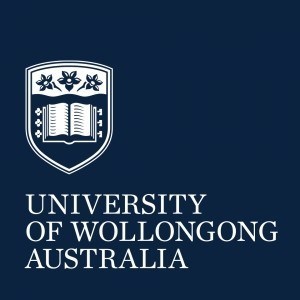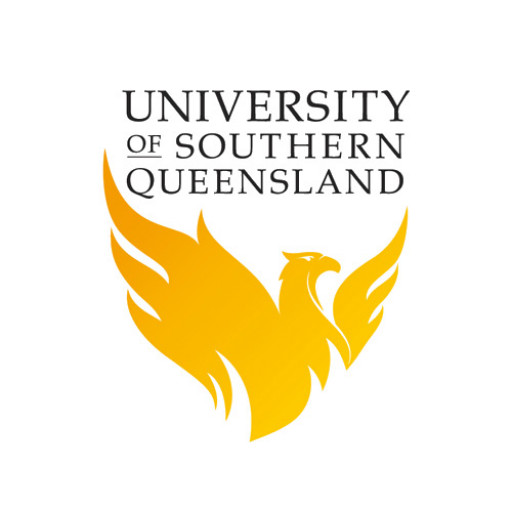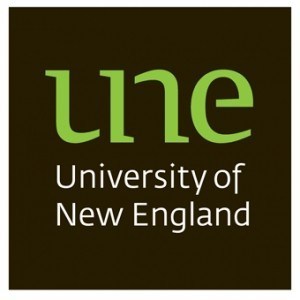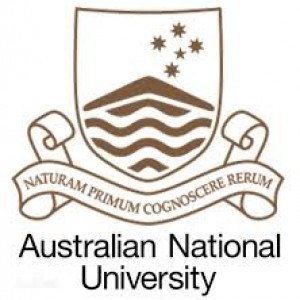Photos of university / #uow
The Doctor of Medicine (MD) at the University of Wollongong is a comprehensive postgraduate program designed to prepare students for careers in medical practice, research, and leadership within the healthcare sector. This innovative program integrates rigorous academic coursework, practical clinical training, and research components to equip graduates with the necessary skills, knowledge, and professional attributes required to excel in modern medicine. The curriculum emphasizes a patient-centered approach, emphasizing the importance of compassionate care, ethical practice, and effective communication in medical settings. Throughout the program, students engage with a diverse range of subjects including human anatomy, physiology, pathology, pharmacology, and clinical skills, ensuring they develop a deep understanding of the biological and social aspects of health and disease. The program also incorporates interprofessional education, offering opportunities for students to collaborate with peers from various healthcare disciplines, fostering teamwork and leadership capabilities. Clinical placements are integrated throughout the course, providing real-world experience in hospitals, community health settings, and specialized clinics. These placements are designed to enhance practical skills, clinical reasoning, and decision-making abilities in a variety of medical contexts. The University of Wollongong’s MD program emphasizes evidence-based practice and lifelong learning, encouraging students to stay current with medical advances and adapt to evolving healthcare environments. Additionally, students participate in research projects that cultivate critical thinking and inquiry skills, supporting the development of future medical researchers and educators. The program is delivered by experienced faculty members, including clinicians and researchers dedicated to student success and clinical excellence. Graduates of the Doctor of Medicine program are well-prepared to pursue internships, residencies, and specialized training, and many go on to make significant contributions to healthcare, education, and policy. The University of Wollongong’s MD program is committed to fostering diversity and inclusion, ensuring all students receive equitable opportunities to achieve their career aspirations. Through a combination of theoretical learning, practical experience, and research, the program aims to produce competent, compassionate, and innovative medical professionals ready to meet the health needs of diverse populations.
Course structure
The UOW MD course is a four-year program, with each academic year being approximately 42 weeks in length. In Phase 1, students participate in approximately 25 hours of structured and an additional 20–30 hours of self-directed teaching and learning experiences each week. As the course progresses and the clinical exposure increases, the face-to-face requirement resembles fulltime clinical work.
Participation in scheduled small-group learning activities, clinical skills laboratories, anatomy laboratories and clinical placements are an integral part of each student’s learning. As the course progresses there is increasing reliance on online delivery of the structured learning activities that complement learning experiences in the clinical environment.
The Curriculum Phases
The curriculum is divided into four consecutive phases, each phase involving a progressive increase in the depth of study and skills acquisition in Clinical Competencies, underpinning Medical Sciences, Personal & Professional Development, and Research & Critical Analysis skills.
At the centre of the four-year curriculum are 93 clinical presentations (e.g. headache). For each of these core clinical presentations there are many possible diagnoses that reflect the range of conditions likely to be seen by a newly-qualified doctor. Students will make increasing use of these problems as a “blueprint” to guide the range and depth of learning they need to achieve by the end of the MD. They are introduced to the students via Case-Based Learning (see below), which forms the core of the curriculum.
- Medical Sciences.The Medical Sciences component of the course underpins the clinical problems. All science learning and teaching is integrated with clinical medicine. Rather than having separate “subjects” such as anatomy, physiology, biochemistry, population health or behavioural science, these content areas are woven into the clinical presentations that are the focus of the course delivery within each week or fortnight-long component of the degree.
- Clinical Competencies.From the very start of the course students develop their abilities in listening to patients, in examining them, in reaching a diagnosis, in formulating a treatment plan and in being able to perform a range of procedures. In addition, students become more aware of the interpersonal skills and professional behaviours needed to work as a member of a health care team. A graduated approach to learning clinical and communication skills is complemented by the use of volunteer patients, trained actors, and a range of models for practicing procedural skills, moving on to clinical interaction with the wider medical community as the program progresses.
- Personal and Professional Development.The course includes a significant focus on the interaction between personal development and professional functioning, with structured assessable learning activities designed to foster reflective practice, commitment to life-long learning, and aid understanding of ethical, scientific and philosophical principles underlying the practice of medicine. These activities include the development of a relationship with a mentor who becomes a consistent figure in each student’s professional development. The Personal and Professional Development curriculum is informed by research evidence, and the program itself carefully evaluated.
- Research and Critical Analysis.This part of the course helps students develop the knowledge and skills to conduct research, evaluate evidence and use it as the basis for their practice of Medicine.
- An Australian University listed in the National Register of higher education providers at the TEQSA National Register
- Or an equivalent overseas Bachelor qualification from an institution that is recognised under the framework and guidelines set by the Australian Department of Education and Training Qualifications Recognition Policy Unit (previously AEI-NOOSR).
- Level of English is required to gain admission. IELTS Academic 7.0, TOEFL (Internet-based) - 100.
- All students are required to pay Overseas Student Health Cover for the duration of their student visa. OSHC provides for medical and hospital cover for students and their dependants.Our preferred OSHC provider is BUPA.
- All applicants will be required to submit either certified copies or original transcripts of their most recent Bachelor's degree with their application. The GPA is calculated using all subjects taken within the last three full time equivalent years of the most recent undergraduate degree.
- International applicants sitting the Graduate Australian Medical Schools Admission Test (GAMSAT), GAMSAT (UK and Ireland) need to have gained a minimum score of 50 for each of the three sections and an overall minimum score of 50 to be eligible to apply.
- International applicants that use MCAT must have gained a minimum overall score of 24 or 500 in the MCAT.
- All applicants will be required to prepare a portfolio to be submitted to UOW GSM. For the application round for 2017 entry, please ensure the correct application form (BLUE in colour) has been downloaded and submitted
- The interview for international students will take the form of a semi-structured panel-style interview process and will take place using the best available technology at various locations depending on the applicant pool. Interviews for 2017 entry are scheduled to occur from February to September 2016.
- An international student who is granted Permanent Resident (or New Zealand Citizen) status after an offer is made may be ineligible for a place at the GSM and may be excluded from the program.
The Doctor of Medicine (MD) program at the University of Wollongong offers comprehensive financing options designed to support students throughout their medical education. Domestic students may be eligible for a variety of government-funded financial assistance programs, including Commonwealth-supported places, which significantly reduce the tuition fees. These places often require students to meet specific residency and eligibility criteria, and they may include access to HECS-HELP (Higher Education Loan Program) loans, allowing students to defer a portion of their tuition fees until they reach a certain income level after graduation. International students, on the other hand, are responsible for paying full tuition fees unless they qualify for scholarships or sponsorships. The university provides a range of scholarships specifically targeted at medical students, which may be merit-based, need-based, or targeted towards students from diverse backgrounds or regions. These scholarships can significantly offset the costs associated with the MD program and are awarded based on academic achievement, demonstrated financial need, or other criteria set by the university.
Additionally, the university encourages students to seek external funding sources such as government or private sector scholarships, grants, and sponsorships. Many students also utilize student loans offered by financial institutions, which can be arranged independently of the university. The cost of the program includes tuition fees, which vary annually and may be adjusted for each academic cohort. Besides tuition, students should consider expenses for textbooks, materials, living costs, health insurance, and placement-related costs, which might be partly covered by government health schemes for domestic students. International students should also budget for visa, travel, accommodation, and health insurance costs. The university offers financial counseling services to assist students in understanding their financing options, planning their budgets, and applying for available funding sources. Some students may combine multiple sources of funding to finance their education, including personal savings, family support, scholarships, loans, and employment during their studies. Overall, the program's financing options aim to make medical education accessible and manageable for qualified students, promoting equity and supporting their successful completion of the Doctor of Medicine degree.
Student Services and Amenities Fee
The SAF is a compulsory charge, introduced following changes to Australian Government legislation, which funds improvements to facilities for students across a broad range of service areas, such as subsidised food outlets, childcare, student advocacy as well as sporting, recreational and cultural activities.
All international students enrolled at UOW will be invoiced twice yearly for the amount determined each year. The SAF 2016 fee is:
- Wollongong campus $290.00 per year
- Sydney campus $145.00 per year
- Wollongong Innovation Campus $145.00 per year
- Other campuses in Australia $145.00 per year
Living Expenses
In addition to tuition fees, a single student living in Wollongong will require $10,000 to $12,000 a year – depending on lifestyle – to cover accommodation, food, transport and other expenses including text books and study materials and entertainment.



